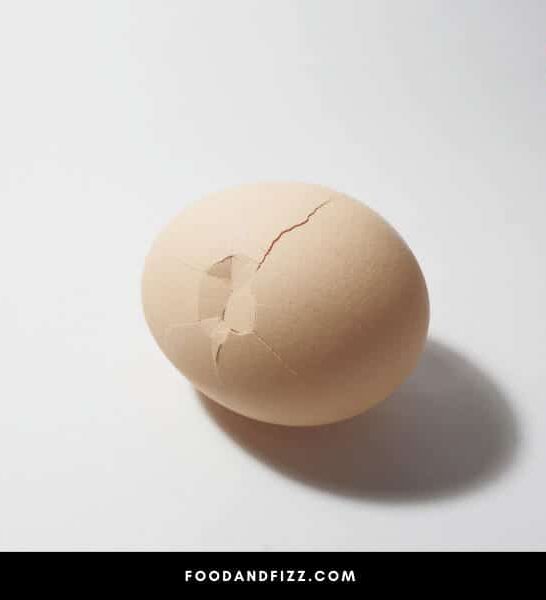Hard boiled eggs are a great healthy snack, but making them can be stressful. The most difficult part is often placing the eggs into the water without breaking them.
Of course, you may also encounter a cracked egg in the package. What do you do with it? Can you boil it, or is it no longer usable?
Boiling a Cracked Egg
The best method for boiling a cracked egg is to use vinegar and salt. Adding vinegar and salt to the water will prevent the egg white from escaping from the shell.
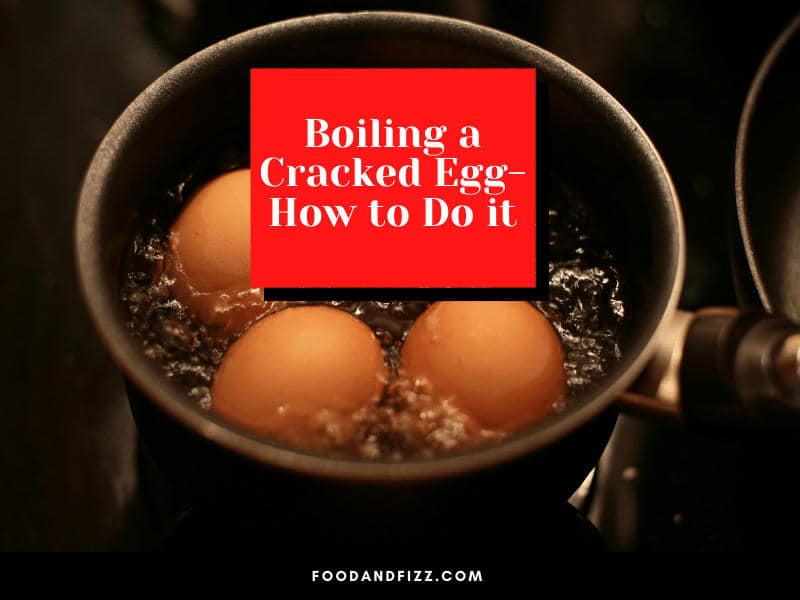
Boiling a Cracked Egg Step by Step
Let’s take a closer look at how to boil a cracked egg. We’ll go step by step, so you’ll get perfect eggs every time.
1. Prepare a Pan of Water
First, you’ll need to select a pot to boil your eggs. Fill it with enough water to cover the eggs. The water should cover the eggs by at least 1 inch or more.
2. Add Vinegar and Salt
Add 1/2 to 1 teaspoon of white vinegar to the water. This prevents the egg white from escaping if the egg is broken. You can also add a pinch of salt to the water. This helps the egg white to solidify, preventing it from escaping from a broken shell.
If you are worried about eggs breaking during the cooking process, you can add white vinegar and salt just in case. This will prevent your eggs from being ruined or deformed if they break.
3. Boil Water
Of course, boiling eggs requires boiling water. You may wonder if you should boil the water before placing the eggs into the water. Yes. This helps the eggs to separate from the shell, which makes them easier to peel. Bring a pot of water to a rolling boil.
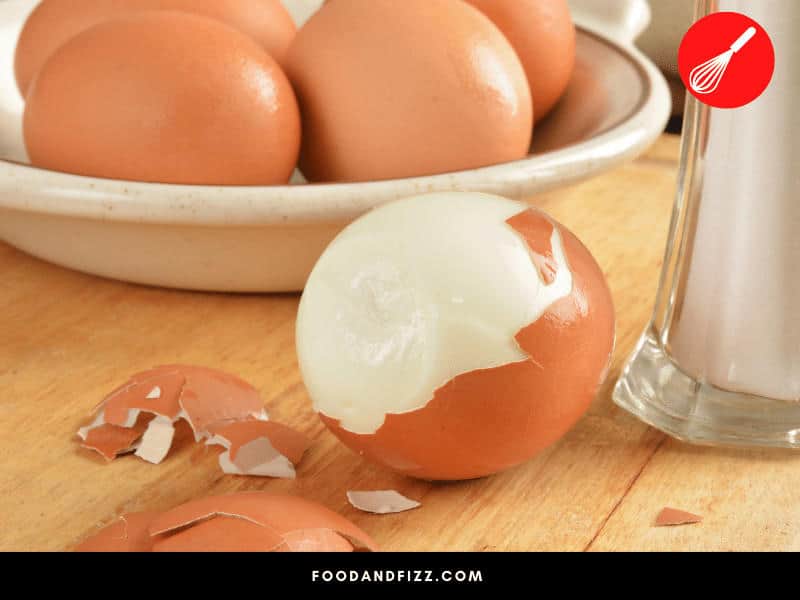
4. Place the Eggs Into the Water
You’ll need to place the eggs into the boiling water. Use a large spoon to gently lower the eggs into the water. If you just drop them in, you could end up breaking them.
5. Adjust the Temperature
When you place the cold eggs into the water, it lowers the temperature. You may need to leave the heat on high for 30 seconds or more. Once it’s back to a rolling boil, turn the heat down.
You want the eggs to have a gentle boil.
6. Timing
Boiling eggs is all about timing. For soft boiled eggs, boil the eggs for 6 minutes. For hard boiled eggs, you’ll boil them for 12 minutes.
7. Cool the Eggs
Once the eggs are done cooking, you’ll want to cool them. If you don’t, they will continue to cook because of the heat inside the eggs.
The easiest way to do this is to pour the boiling water away from the eggs. Then fill the pot with cold water. You may need to repeat this process a few times to cool the eggs and the pan.
You can also remove the eggs from the pan and place them into a bowl. Then add cold water. However, this is an extra step that isn’t really required. The key is simply to cool them off.
8. Let Them Rest
Once you have the eggs cooling, you’ll need to let them rest. Let them sit in the cold water for 15 to 20 minutes. This allows them to cool further as well.
Plastic Wrap Method
There’s another method for boiling a cracked egg. For this, you’ll need to tightly wrap the broken egg in food grade plastic wrap. Then, boil it as you would normally.
The egg will float in the water, rather than sinking as eggs typically do. The plastic wrap does increase the cooking time. Instead of 12 minutes for a hard boiled egg, you’ll need to boil it for 15 minutes.

Safety Considerations
There are some safety considerations when you are boiling a cracked egg. The shell of an egg prevents bacteria from getting inside the egg.
When the egg cracks, it is a bit like getting a cut on your finger. You know that the wound can allow bacteria to get into your body and make you sick.
There are situations where it’s perfectly safe to use a cracked egg, but in other cases, you should throw it out instead.
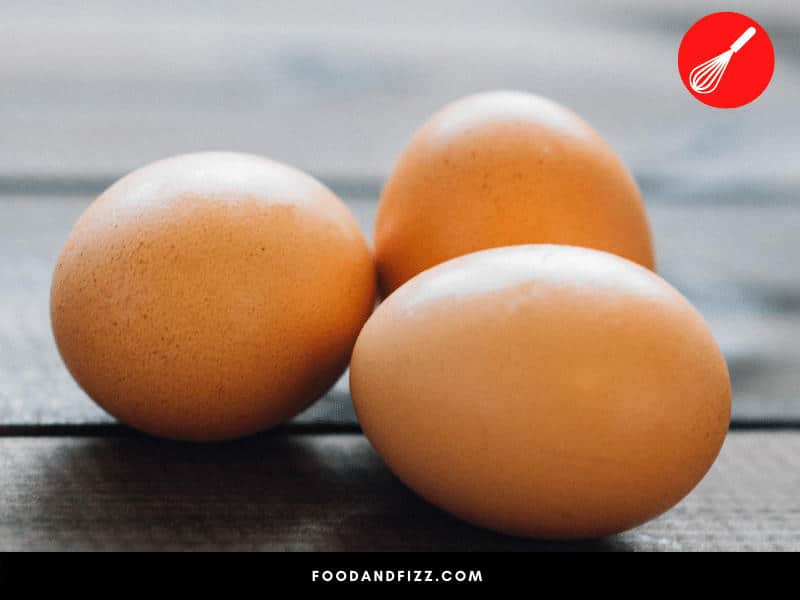
When is a Cracked Egg Safe?
If you know that the egg cracked inside its package within your home or fridge, it’s safe to use. The package helps prevent contamination. You also know exactly where the egg has been since it cracked.
When Shouldn’t You Use a Cracked Egg?
If the egg was cracked when you got it from the store, it’s best not to use it. You don’t know what it’s been exposed to after it cracked. It’s extremely unlikely that someone nefariously contaminated the egg, but touching the egg with unwashed hands is all it takes to create contamination.
You should also pay attention to the look and smell of the egg. If it smells off or rotten, toss the egg.
Once an egg is cracked, it has a much shorter shelf life. The unbroken eggs in the package may be fine, but the cracked egg could have gone bad.
If an egg gets cracked, it’s best to cook it within a few days of it cracking for this reason.
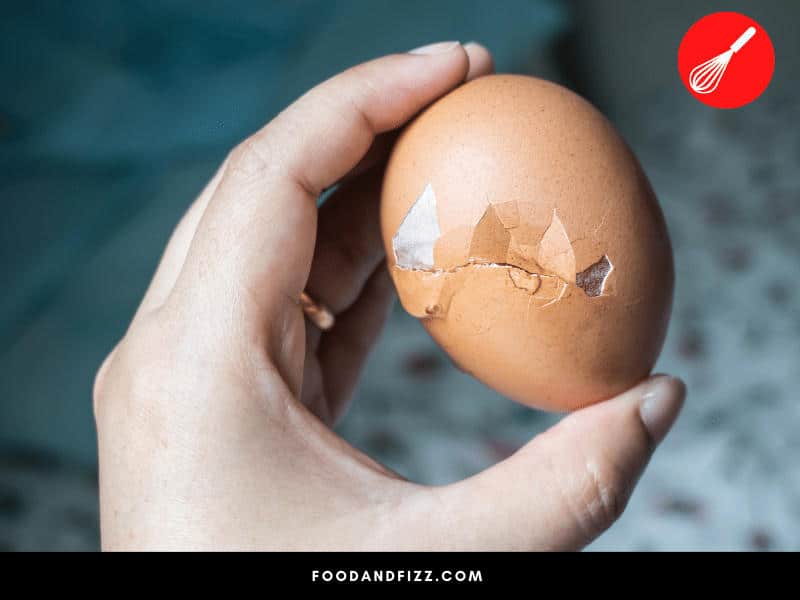
Final Thoughts on Boiling a Cracked Egg
Boiling a cracked egg is fairly simple. Just add 1/2 teaspoon of vinegar and a pinch of salt to the water before bringing it to a boil.
Be sure that the egg is safe to eat, however. Consider when the egg cracked, and its smell before cooking.
Frequently Asked Questions on Boiling a Cracked Egg- How to Do It
What Causes Hard Boiled Eggs to Be Hard to Peel?
Eggs are hard to peel because they are added to the water while it’s cold. To get easy to peel hardboiled eggs, place the eggs in the water after it begins to boil.
Can You Boil Eggs Without the Shell?
You can boil eggs without the shell. To do this, you’ll need silicone pods known as egglets. Add the eggs to the pods, and boil as you would normally. This eliminates the need to peel the eggs, and you don’t have to worry about the shells cracking.

